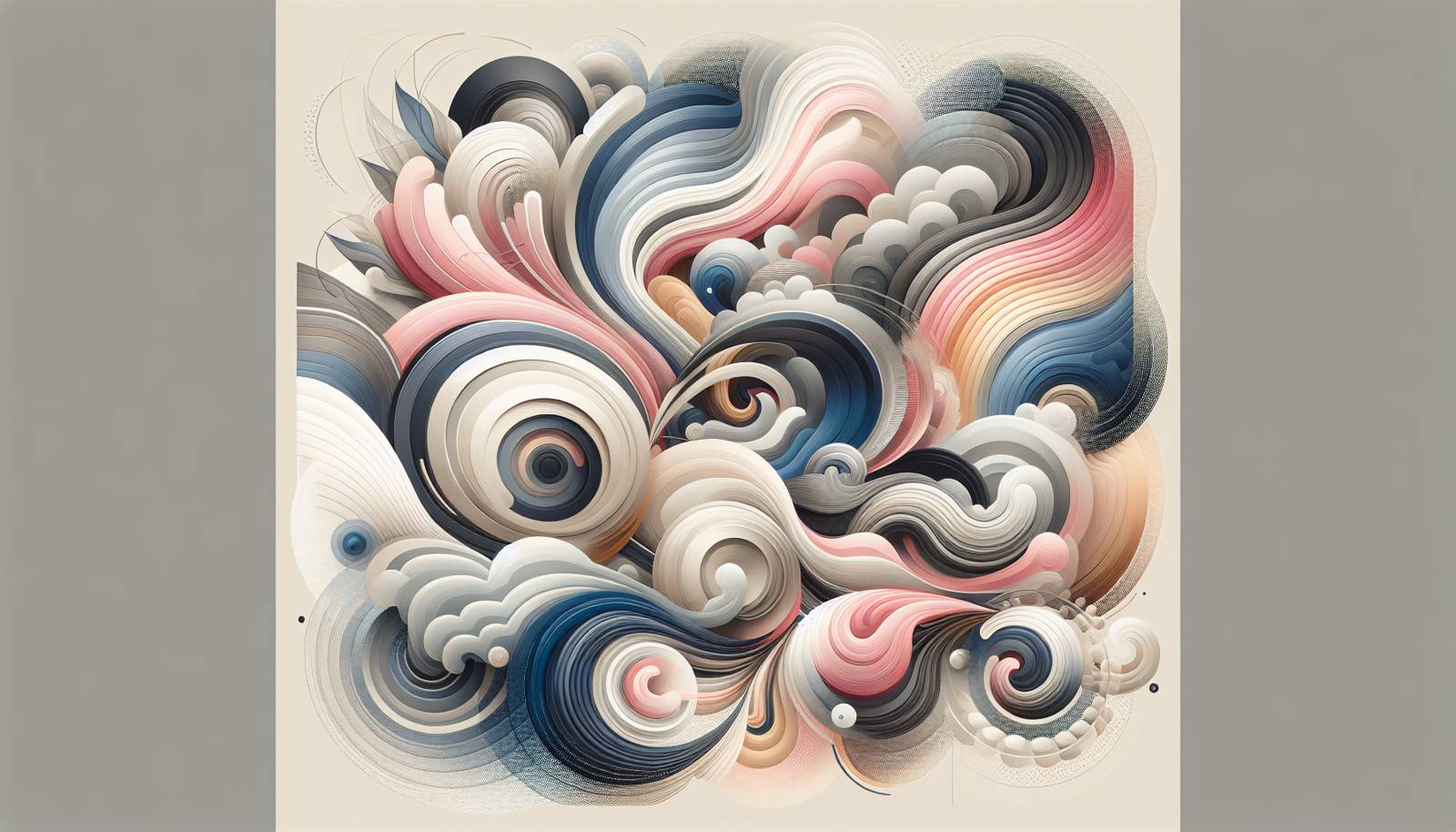
FAQ About The Role of Art Merchandising in Pop Culture

What is art merchandising?
Art merchandising refers to the commercialization and distribution of art-related products. It involves the creation and sale of items such as posters, t-shirts, mugs, and other merchandise that feature artwork or are inspired by artistic designs. This practice extends beyond just traditional art and often includes collaborations between artists and commercial brands, leading to a wide variety of consumer products.

How does art merchandising impact pop culture?
Art merchandising plays a significant role in shaping pop culture by making art more accessible to the general public. Through widely available products, it allows people to engage with art on a daily basis, often reflecting current trends and influencing fashion, lifestyle, and consumer behavior. Collaborations between artists and brands can also introduce new aesthetics and ideas into mainstream culture, further integrating art into everyday life.

Can you provide examples of artist collaborations with brands?
Yes, there are numerous examples of artist collaborations with brands. For instance, Japanese artist Takashi Murakami has collaborated with fashion brand Louis Vuitton, creating a line of handbags that feature his distinctive colorful designs. Similarly, American artist KAWS has partnered with brands like Uniqlo and Jordan Brand to create unique apparel and sneaker collections. These collaborations often bring unique artistic perspectives to the consumer products market.

Why do artists collaborate with fashion and lifestyle brands?
Artists collaborate with fashion and lifestyle brands for several reasons. Such partnerships provide artists with exposure to new audiences, allowing them to reach consumers who may not typically visit galleries or exhibitions. Additionally, these collaborations can be financially rewarding for artists while also allowing them to explore new creative mediums and work on diverse projects. For brands, collaborating with artists can enhance their image, attract attention in the saturated market, and add a unique edge to their product lines.

How has mass production affected the art world?
Mass production has significantly transformed the art world by making art more accessible and affordable. While traditional art may be limited to galleries and private collections, mass-produced art such as prints and merchandise enable a broader audience to enjoy and own pieces inspired by famous artworks. However, it has also sparked debates about the value and authenticity of art, with some arguing that mass production can dilute the uniqueness of original works.

What is the cultural significance of artist-branded merchandise?
Artist-branded merchandise holds cultural significance as it reflects the intersection of art, commerce, and daily life. Such merchandise allows art to transcend traditional boundaries and become part of popular culture, impacting everything from what people wear to how they decorate their homes. It also showcases the influence of certain artists on contemporary culture and can alter perceptions of what art can be and how it can be consumed.

How do artist collaborations influence fashion trends?
Artist collaborations can have a profound impact on fashion trends by introducing new styles and aesthetics. When artists team up with fashion brands, they bring unique design perspectives that can lead to innovative garment patterns, color schemes, and thematic concepts. These collaborations often catch the attention of fashion enthusiasts and trendsetters, sometimes setting or reshaping trends for upcoming seasons. For example, collaborations featuring bold, abstract prints can boost the popularity of such designs across the fashion industry.

What role does pop culture play in the success of art merchandising?
Pop culture plays a critical role in the success of art merchandising by driving demand. Popular culture often dictates the trends that consumers follow, and when an artist or artistic style gains popularity, related merchandise tends to perform well commercially. The viral nature of pop culture content—through social media, celebrity endorsements, and trends—also helps spread awareness and boost interest in art merchandise.

Are there any downsides to art merchandising?
Art merchandising, while beneficial in many ways, also has potential downsides. Critics argue that it can commercialize art excessively, sometimes prioritizing profit over artistic integrity. Additionally, mass-produced items might undermine the perceived value of original artworks, leading to concerns about their uniqueness and authenticity. Some artists and enthusiasts worry that art merchandising might overshadow traditional art forms and venues, such as museums and galleries.

What are the economic benefits of art merchandising?
Art merchandising offers significant economic benefits by providing additional revenue streams for artists and businesses. Artists can monetize their work beyond traditional sales and exhibitions by licensing their designs for merchandise. For brands, incorporating artistic elements into their products can differentiate them from competitors and attract diverse audiences. This commercial synergy drives sales and can have a positive influence on the broader economy by fostering creativity and innovation within industries.

How do art fairs and exhibitions support art merchandising?
Art fairs and exhibitions support art merchandising by serving as platforms to showcase and promote artist-branded products. These events attract art lovers, collectors, and industry professionals, providing a unique opportunity for artists and brands to introduce their merchandise to a wider audience. Besides selling artwork, artists often display items like apparel, prints, and accessories during these gatherings, thus encouraging visitors to engage with art in more tangible, everyday forms.

What is the relationship between street art and merchandising?
Street art and merchandising have a synergistic relationship wherein the art form lends its edgy, urban aesthetic to consumer products while benefiting from broader exposure through merchandise sales. Many street artists, like Banksy and Shepard Fairey, have embraced merchandising to disseminate their work beyond the physical limitations of street locations. Merchandise bearing street art designs can democratize the art form, making it accessible to a larger audience and promoting the artists involved.

How do social media platforms influence art merchandising in pop culture?
Social media platforms significantly influence art merchandising by providing artists and brands with direct channels to reach consumers. Through platforms like Instagram, TikTok, and Pinterest, art can quickly gain popularity, and merchandise can be marketed directly to a global audience. Social media also enables viral marketing, where imagery affiliated with pop culture trends can boost the visibility and desirability of art merchandise, often leading to increased sales.

What is the difference between licensed merchandise and knockoffs in the art world?
Licensed merchandise is legally authorized by artists or their representatives and involves official agreements to reproduce artwork on consumer products. Such merchandise is often considered a legitimate extension of the artist's work. Knockoffs, on the other hand, are unauthorized reproductions or imitations that infringe on the artist's copyrights and intellectual property. Knockoffs can undermine the artist's brand and lead to legal disputes while depriving artists of potential income from their creations.

How does art merchandising contribute to an artist's brand identity?
Art merchandising contributes to an artist's brand identity by expanding their artistic vision into everyday consumer products. Merchandise often embodies the artist’s distinctive style and themes, allowing fans to express their appreciation through ownership and use of these items. This commercial representation can greatly enhance an artist’s visibility and reputation in the eyes of the public, and create an enduring connection between the artist and their audience, adding layers to their brand identity.

Can art merchandising be considered a form of art itself?
Some people consider art merchandising to be a form of art, as it involves creativity in merging artistic concepts with practical consumer products. The design process for merchandising requires artists to adapt their work to various formats and settings, which can be seen as an artful challenge. Furthermore, high-quality, innovative merchandise can be appreciated for its aesthetic value, blurring the lines between pure art and commercial product design.

What strategies do brands use to collaborate with artists?
Brands use various strategies to collaborate with artists, including partnerships, limited edition releases, and co-branded campaigns. These collaborations often start with identifying an artist whose style resonates with the brand’s image or desired audience. Brands might then commission original work, adapt existing pieces, or involve artists in the design process of new products. Successful collaborations often involve shared promotion across multiple platforms to maximize exposure and consumer interest.

How do art merchandise collaborations address sustainability concerns?
Art merchandise collaborations increasingly address sustainability concerns by prioritizing eco-friendly materials, ethical production processes, and sustainable business practices. Some brands and artists focus on creating limited edition items to minimize waste and use biodegradable or recycled materials to reduce environmental impact. These steps not only demonstrate corporate and artistic responsibility but also appeal to environmentally-conscious consumers who are integral to the pop culture market.

What are the legal considerations in art merchandising?
Legal considerations in art merchandising include securing copyrights and intellectual property rights to reproduce an artist's work. Artists and brands must ensure that merchandise agreements are clear and legally sound, often requiring licenses that specify terms of use, distribution, and compensation. It's crucial to manage these legal aspects to avoid potential disputes over usage rights and to protect both the artist’s work and the brand’s reputation.

How has digital technology changed art merchandising?
Digital technology has transformed art merchandising by facilitating smoother processes for design, production, and distribution. Online platforms allow artists to create and sell merchandise without the need for physical stores, and digital printing technologies make it easier to produce quality merchandise on-demand. Additionally, technology enables intricate designs and customizations that align with current digital trends, broadening the scope and appeal of art merchandise in the digital age.
